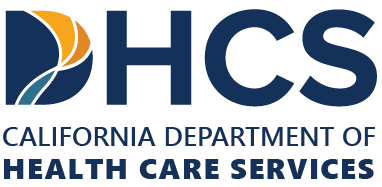A new analysis of research on AA published this year by Keith Humphreys, PhD et al. has sought to answer some long-standing questions about whether or not Alcoholics Anonymous is effective for alcohol use disorder and other substance use disorders.
Alcoholics Anonymous has been considered the gold standard in the treatment and mental health world for decades as a method of helping individuals beat their drinking and drug use problems. There have also been over 30 other free fellowships formed that directly utilize their 12-step program model of recovery. This number doesn’t even include the many fellowships and groups out there that credit AA with influencing their model, such as Celebrate Recovery. However, the fellowship’s insistence that each AA group remains autonomous, that access to the fellowship remains free of charge, and it’s historical resistance to being directly studied may lead one to some very logical questions:
- How effective is AA and 12 step treatment?
- If it is effective, is it more effective than other forms of treatment such as cognitive behavioral therapy?
AA Research – some quick background
Humphreys is a professor of psychiatry and behavioral studies and a member of the Wu Tsai Neurosciences Institute at Stanford University. For the past 3 years, Humphreys and his co-authors have been reviewing research from over 57 independent studies concerning the effectiveness of Alcoholics Anonymous as a solution to the basic trouble of the alcoholic, drug addict, or substance abuser.
They ran the meta-analysis through the standards set forth by the Cochrane Collaboration, which has long been considered the gold standard for meta-analysis. It is trusted by clinicians and considered to be bias resistant. After holding the 57 studies up to Cochrane Reviews’ standards, it was decided that 27 of them were suitable for inclusion in the meta analysis. The 27 studies represented research on over 10,000 individuals ranging in age from young to old and who either attended AA or received other types of therapy. The average ages of participants in the studies was between 34 and 51. This is quite a large evidence base!
The original abstract of the research can be found in the Cochrane Library by clicking here.
The basics of the AA 12-step approach – a quick overview

Alcoholics Anonymous gives out chips denoting various lengths of sobriety.
Alcoholics Anonymous is a grassroots movement that dates back to the 1930’s between two alcoholics who were trying to maintain abstinence from alcohol. They found that when they connected with each other, and attempted to deliver their message of hope and recovery to alcoholics still suffering, they were able to maintain their own sobriety, and even find peace and happiness.
This realization flowered into multiple free support groups in Akron, New York, and Cleveland. They later formed the basis of their recovery process, the well known approach using 12 steps. This process starts with admission of powerlessness over one’s addiction and developing a relationship with a higher power of the participant’s choice. It proceeds to complete a thorough inventory of one’s conduct and life, continues through a process of making amends with those harmed, and culminates with the 12th step – delivering the message to those who still suffer of alcoholism and addiction.
AA’s model is completely free and self-sustaining, denying charitable contributions from outside organizations. AA members are free to consider themselves members if they have a stated desire to stop drinking.
The study’s results – does AA really work?
The study refers to AA/TSF interventions, which means Alcoholics Anonymous and Twelve Step Facilitation. These interventions were compared with other psychological clinical interventions, such as cognitive behavioral therapy. Three areas were studied: rates of continuous abstinence, percentage of days abstinent, intensity of drinking/using, and healthcare cost savings.
It was found that:
AA improves rates of continuous abstinence at 12 months, and that the effect continues at 24 and 36 months. This means that AA meetings and 12 step interventions are particularly better at producing continuous abstinence in the long term.
For percentage of days abstinent (days sober compared to days not sober), AA performs as well as other clinical interventions at 12 months – but AA outperforms other interventions at 24 and 36 months.
For drinking intensity (drinks per drinking day / percentage heavy drinking days), AA was found to perform as well as other clinical interventions at 9 months and 12 months.
3 of the 4 studies reporting on the cost of health care reported that AA and 12-step interventions showed greater health care cost savings. The fourth study concluded that other interventions outperformed AA, but that those with the worst prognostic characteristics showed greater health care savings from AA. While at first this may seem like it should be obvious, keep in mind that things like overdoses, hospital visits, and sickness add to healthcare costs as well. Sober people have lower healthcare costs in general.
The authors’ general conclusions, as quoted directly from the abstract:
“There is high quality evidence that manualized AA/TSF interventions are more effective than other established treatments, such as CBT, for increasing abstinence. Non‐manualized AA/TSF may perform as well as these other established treatments. AA/TSF interventions, both manualized and non‐manualized, may be at least as effective as other treatments for other alcohol‐related outcomes. AA/TSF probably produces substantial healthcare cost savings among people with alcohol use disorder.”
What does this mean for counseling, therapy, and rehab?
Humphreys also addressed the controversy that can surround Alcoholics Anonymous at times. He noted that while physicians tend to support 12 step approaches, psychiatrists and psychologists will sometimes regard the fellowship with skepticism. After all, how can lay people do a better job at facilitating recovery from alcohol and drugs than a trained psychologist with degrees?
Humphreys was quick to point out that while the study has made him a true believer in the Alcoholics Anonymous approach, he isn’t saying that counseling or substance abuse treatment shouldn’t be considered. He recommends that counseling for substance users can be designed as a “an extended, warm hand-off into the fellowship.” He noted in a podcast interview with Stanford Medicine that he felt validated for his recommendation that so many different people try Alcoholics Anonymous over the years. While he does admit that the AA way of life doesn’t necessarily work for every single person, an individual with a substance abuse problem will likely be better off if they give AA a try.
Based on our extensive experience helping young people and teens stop drinking and find sobriety, we would agree with Humphrey’s assessment here. Alcohol and drug treatment programs, whether inpatient or outpatient, in addition to therapy, are all valuable tools, but we see success rates dramatically improve when the participant is willing to make a transition into Alcoholics Anonymous or a similar fellowship (such as those directed at drug addiction) once their participation in our support groups comes to a close.
Further reading on this important research on Alcoholics Anonymous can be found Stanford University and Inverse.com.






